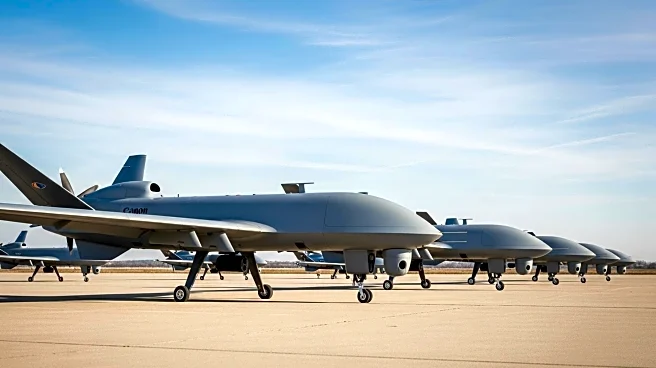What's Happening?
China conducted a significant military parade in Beijing, showcasing advanced weaponry that underscores President Xi Jinping's vision for a new world order with China at the forefront. The parade featured a range of high-tech arms, including the DF-61 intercontinental ballistic missile and mobile laser air defense weapons. These developments suggest China's growing military capabilities, potentially challenging adversaries' ability to counter Chinese movements in the region. The display also included hypersonic glide vehicles, drones, and directed energy weapons, indicating China's industrial capacity to produce advanced military technology.
Why It's Important?
The parade demonstrates China's increasing military prowess and industrial capacity, which could shift regional and global power dynamics. China's defense spending has grown significantly, closing the gap with the United States and surpassing regional neighbors like Japan and South Korea. The ability to produce advanced weaponry in large volumes suggests China could enforce its strategic ambitions more effectively. This development may impact U.S. military strategy and alliances in the Asia-Pacific region, as China positions itself as a formidable military power.
What's Next?
China's military advancements may prompt strategic recalibrations by the United States and its allies. The U.S. may need to enhance its technological capabilities and increase defense spending to maintain its military edge. Regional countries might seek stronger alliances with the U.S. to counterbalance China's growing influence. Additionally, China's focus on autonomous and networked warfare systems could lead to increased investments in similar technologies by other nations.
Beyond the Headlines
The parade highlights ethical and strategic considerations regarding the use of advanced military technologies, such as directed energy weapons and autonomous drones. These technologies could change the nature of warfare, raising questions about their implications for international security and arms control. The demonstration of China's indigenous production capabilities also suggests a shift towards self-reliance, reducing vulnerability to foreign weapon suppliers.











